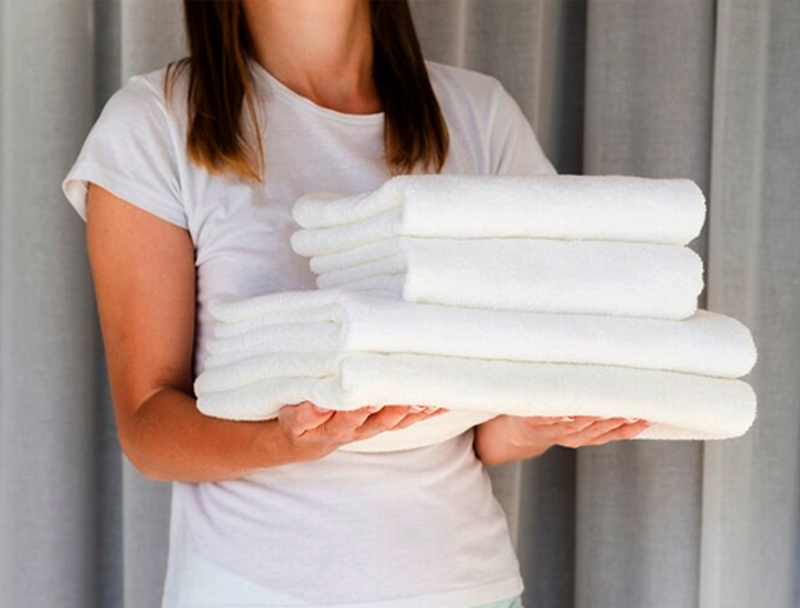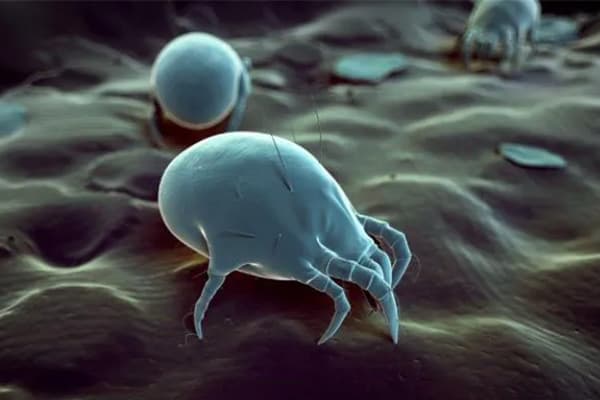Did you know your bed likely has between 100,000 and 10 million dust mites constantly laying their droppings? Yuck! This makes washing your bed sheets and other bedding products increasingly important. Although, it may be easy to forget to wash your bedding products, understand that some people spend more time in bed than in their clothes. You wash your clothes regularly, so bedding shouldn’t be any different.
How often should you wash your bed sheets?

A recent study shows the average American changes their sheets every 24 to 25 days, but is that really enough? Well, it depends. If you are allergic to dust mites along with 20 million other Americans, or really just don’t like sleeping in a hosting ground of critter droppings, you should be washing your sheets every 14 days. It is important to wash you bedding products in water at least 140 degrees Fahrenheit to kill off the dust mites and other germs.
The allergens, dust mites, perspiration, viruses, bacteria, and dust lurking in your bed can lead to some serious health issues. When we inhale these bacteria, it causes irritation and swelling of the respiratory passages. You may experience coughing, post-nasal drip, sneezing, watering eyes, and a runny nose.
The most practical solution to killing these bacteria is simply by frequently washing your sheets. If you find yourself forgetting to wash your sheets every 14 days, another alternative is to find a bed set that is hypoallergenic. These bacteria thrive in a moist environment caused by perspiration. Try sleeping on fabrics like Eli & Elm’s Bamboo Sheet Set. This Bamboo sheet is moisture wicking and will help prevent perspiration during the night. If you are a sleeper that prefers cotton, Eli & Elm’s 400 Thread count cotton sheet is another solution. Cotton sheets with a high thread count are woven tighter and limit the amount of space a dust mite can live in.

It’s important to note that although washing your sheets may kill bacteria on your bed, the mattress itself is a whole separate story. Every mattress needs to have a proper functioning mattress protector. Not only will mattress protectors keep your mattress safe from stains, but it will help prevent bed bugs, dust mites, and other allergens. The most common reason why individuals prefer to sleep without a mattress protector is because they believe it will make them sleep hot. Eli & Elm’s PCM mattress protector is a 5-sided, waterproof, dust mite resistant, hypoallergenic cooling pad that was created to alleviate these concerns. This PCM mattress protector has a “built-in-thermostat” that regulates your temperature keeping you cool all night long.
How do I wash my Sheets?

Most bedding can be washed in warm water. The warmer the water, the greater chance you will have to kill of the harmful bacteria lurking in your sheets. We prefer to use “Sun and Earth’s” laundry detergent. It is free of harmful chemicals, dyes, hypoallergenic and gentle on the plant. When it comes to drying the sheets, place them in the dryer on a medium cycle or dry them on a clothesline outside, if possible. Sunshine is a natural disinfectant and can help brighten whites. Iron sheets to kill any leftover bacteria.
When you should switch your sheets
While your old set of sheets is being washed, have a separate set ready to go. To keep matching sets together you can store your sheets inside one of the pillowcases. A rule of thumb is to have 3 sets of sheets for each bed. You need one on the bed, one to keep in the closet, and one that can be in the laundry. This will streamline your bi-weekly cleaning and keep your bed feeling fresh, while also giving it a new look every other week. A simple swap in sheets will give your bedroom a whole new feel and meaning. It is recommended to have a light and airy Bamboo sheet set or percale cotton sheet set during the summer and a sateen cotton set during the winter. Bed Sheets Buying Guide





















